Citibank 2010 Annual Report Download - page 5
Download and view the complete annual report
Please find page 5 of the 2010 Citibank annual report below. You can navigate through the pages in the report by either clicking on the pages listed below, or by using the keyword search tool below to find specific information within the annual report.-
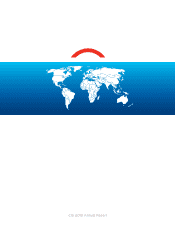 1
1 -
 2
2 -
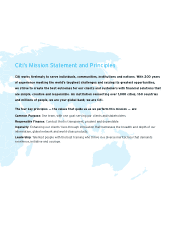 3
3 -
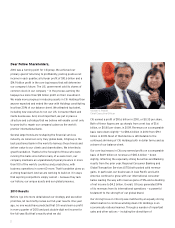 4
4 -
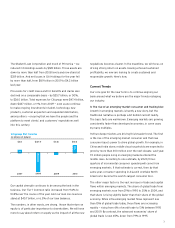 5
5 -
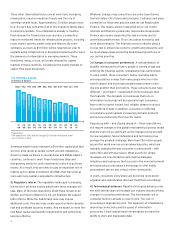 6
6 -
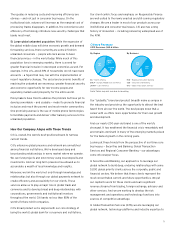 7
7 -
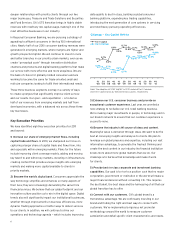 8
8 -
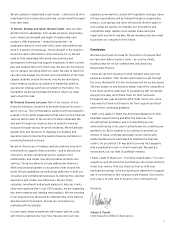 9
9 -
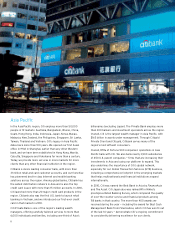 10
10 -
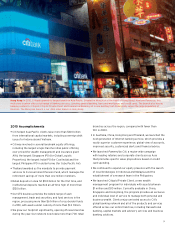 11
11 -
 12
12 -
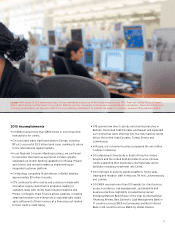 13
13 -
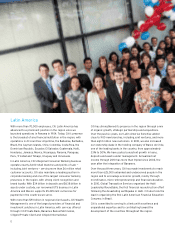 14
14 -
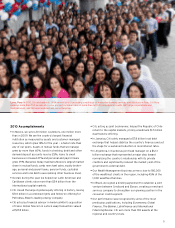 15
15 -
 16
16 -
 17
17 -
 18
18 -
 19
19 -
 20
20 -
 21
21 -
 22
22 -
 23
23 -
 24
24 -
 25
25 -
 26
26 -
 27
27 -
 28
28 -
 29
29 -
 30
30 -
 31
31 -
 32
32 -
 33
33 -
 34
34 -
 35
35 -
 36
36 -
 37
37 -
 38
38 -
 39
39 -
 40
40 -
 41
41 -
 42
42 -
 43
43 -
 44
44 -
 45
45 -
 46
46 -
 47
47 -
 48
48 -
 49
49 -
 50
50 -
 51
51 -
 52
52 -
 53
53 -
 54
54 -
 55
55 -
 56
56 -
 57
57 -
 58
58 -
 59
59 -
 60
60 -
 61
61 -
 62
62 -
 63
63 -
 64
64 -
 65
65 -
 66
66 -
 67
67 -
 68
68 -
 69
69 -
 70
70 -
 71
71 -
 72
72 -
 73
73 -
 74
74 -
 75
75 -
 76
76 -
 77
77 -
 78
78 -
 79
79 -
 80
80 -
 81
81 -
 82
82 -
 83
83 -
 84
84 -
 85
85 -
 86
86 -
 87
87 -
 88
88 -
 89
89 -
 90
90 -
 91
91 -
 92
92 -
 93
93 -
 94
94 -
 95
95 -
 96
96 -
 97
97 -
 98
98 -
 99
99 -
 100
100 -
 101
101 -
 102
102 -
 103
103 -
 104
104 -
 105
105 -
 106
106 -
 107
107 -
 108
108 -
 109
109 -
 110
110 -
 111
111 -
 112
112 -
 113
113 -
 114
114 -
 115
115 -
 116
116 -
 117
117 -
 118
118 -
 119
119 -
 120
120 -
 121
121 -
 122
122 -
 123
123 -
 124
124 -
 125
125 -
 126
126 -
 127
127 -
 128
128 -
 129
129 -
 130
130 -
 131
131 -
 132
132 -
 133
133 -
 134
134 -
 135
135 -
 136
136 -
 137
137 -
 138
138 -
 139
139 -
 140
140 -
 141
141 -
 142
142 -
 143
143 -
 144
144 -
 145
145 -
 146
146 -
 147
147 -
 148
148 -
 149
149 -
 150
150 -
 151
151 -
 152
152 -
 153
153 -
 154
154 -
 155
155 -
 156
156 -
 157
157 -
 158
158 -
 159
159 -
 160
160 -
 161
161 -
 162
162 -
 163
163 -
 164
164 -
 165
165 -
 166
166 -
 167
167 -
 168
168 -
 169
169 -
 170
170 -
 171
171 -
 172
172 -
 173
173 -
 174
174 -
 175
175 -
 176
176 -
 177
177 -
 178
178 -
 179
179 -
 180
180 -
 181
181 -
 182
182 -
 183
183 -
 184
184 -
 185
185 -
 186
186 -
 187
187 -
 188
188 -
 189
189 -
 190
190 -
 191
191 -
 192
192 -
 193
193 -
 194
194 -
 195
195 -
 196
196 -
 197
197 -
 198
198 -
 199
199 -
 200
200 -
 201
201 -
 202
202 -
 203
203 -
 204
204 -
 205
205 -
 206
206 -
 207
207 -
 208
208 -
 209
209 -
 210
210 -
 211
211 -
 212
212 -
 213
213 -
 214
214 -
 215
215 -
 216
216 -
 217
217 -
 218
218 -
 219
219 -
 220
220 -
 221
221 -
 222
222 -
 223
223 -
 224
224 -
 225
225 -
 226
226 -
 227
227 -
 228
228 -
 229
229 -
 230
230 -
 231
231 -
 232
232 -
 233
233 -
 234
234 -
 235
235 -
 236
236 -
 237
237 -
 238
238 -
 239
239 -
 240
240 -
 241
241 -
 242
242 -
 243
243 -
 244
244 -
 245
245 -
 246
246 -
 247
247 -
 248
248 -
 249
249 -
 250
250 -
 251
251 -
 252
252 -
 253
253 -
 254
254 -
 255
255 -
 256
256 -
 257
257 -
 258
258 -
 259
259 -
 260
260 -
 261
261 -
 262
262 -
 263
263 -
 264
264 -
 265
265 -
 266
266 -
 267
267 -
 268
268 -
 269
269 -
 270
270 -
 271
271 -
 272
272 -
 273
273 -
 274
274 -
 275
275 -
 276
276 -
 277
277 -
 278
278 -
 279
279 -
 280
280 -
 281
281 -
 282
282 -
 283
283 -
 284
284 -
 285
285 -
 286
286 -
 287
287 -
 288
288 -
 289
289 -
 290
290 -
 291
291 -
 292
292 -
 293
293 -
 294
294 -
 295
295 -
 296
296 -
 297
297 -
 298
298 -
 299
299 -
 300
300 -
 301
301 -
 302
302 -
 303
303 -
 304
304 -
 305
305 -
 306
306 -
 307
307 -
 308
308 -
 309
309 -
 310
310 -
 311
311 -
 312
312
 |
 |

3
The Student Loan Corporation and much of Primerica — we
reduced Citi Holdings assets by $128 billion. Those assets are
down by more than half from 2008 levels and now stand at
$359 billion. And net losses in Citi Holdings for the year fell
by more than half, from $8.9 billion in 2009 to $4.2 billion
last year.
Provisions for credit losses and for benefits and claims also
declined on a comparable basis — by $25.7 billion, or 50%,
to $26.0 billion. Total expenses for Citigroup were $47.4 billion,
down $447 million, or 1%, from 2009 — even as we continue
to make ongoing investments in talent, technology, new
products, customer acquisition and expanded distribution,
among others — ensuring that we have the people and the
platform to meet clients’ and customers’ expectations well
into this century.
Our capital strength continues to be among the best in the
business. Our Tier 1 Common ratio increased from 9.6% to
10.8% over the course of the year. And our loan loss reserves
stand at $40.7 billion, or 6.3% of our loan balances.
The numbers, in other words, are strong. I know that return on
equity is of particular importance to shareholders. We will have
more to say about return on equity as the impact of all the new
regulations becomes clearer. In the meantime, we will focus on
driving strong return on assets. Having achieved sustained
profitability, we now are looking to create sustained and
responsible growth. Here’s how.
Current Trends
Our core goal for the near term is to continue aligning our
bank around what we believe are the major trends reshaping
our industry.
1) The rise of an emerging-market consumer and trading bloc:
Growth in emerging markets is hardly a new story, but the
traditional narrative is perhaps a bit behind current reality.
The basic facts are well-known. Emerging markets are growing
consistently faster than developed economies, in some cases
by many multiples.
Yet two deeper factors are driving this broader trend. The first
is the rise of the emerging-market consumer and that new
consumer base’s power to drive global growth. For example, in
China and India alone, middle class households are expected to
grow by more than 300 million over the next decade. Last year,
70 million people living in emerging markets entered the
middle class. According to one estimate, by 2020, three-
quarters of incremental consumer spending will come from
emerging markets. If that estimate is correct, then by that
same year, consumer spending in Asia will overtake North
America to become the world’s largest consumer bloc.
The other major factor is the vast increase in trade and capital
flows within emerging markets. The share of global trade from
emerging markets rose from 21% in 1995 to 35% in 2009, and
that share is rising slightly faster than their share of the global
economy. While intra-emerging market flows represent less
than 15% of global trade today, these flows are increasing
rapidly — rising from 6% of world trade to 13% between 1995
and 2009. By contrast, the advanced economies’ share of
global trade is now 65%, down from 79% in 1995.
Citigroup Net Income
(in billions of dollars)
2008 20102007 2009
$3.6 $(1.6)$(27.7) $10.6
